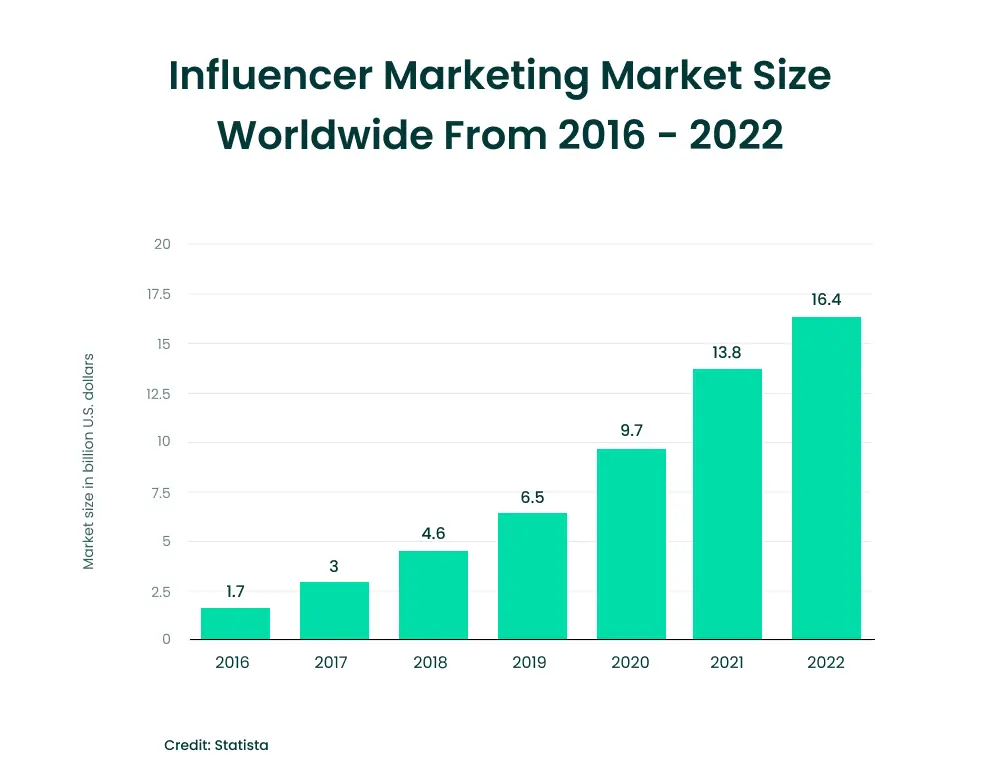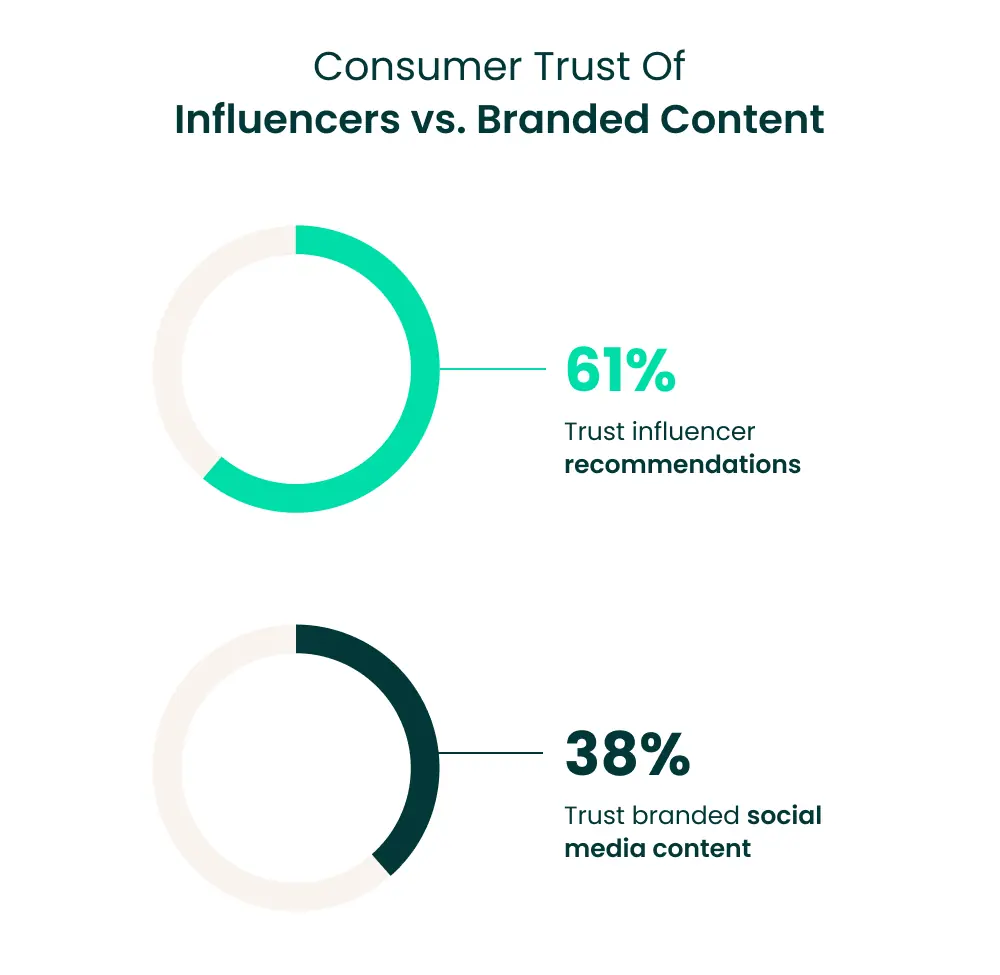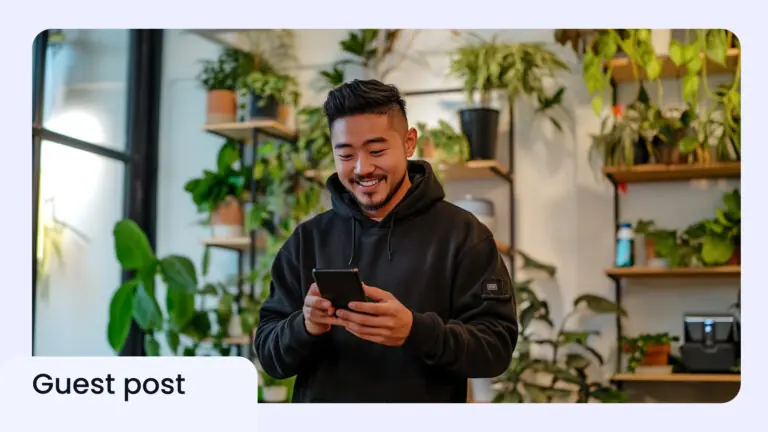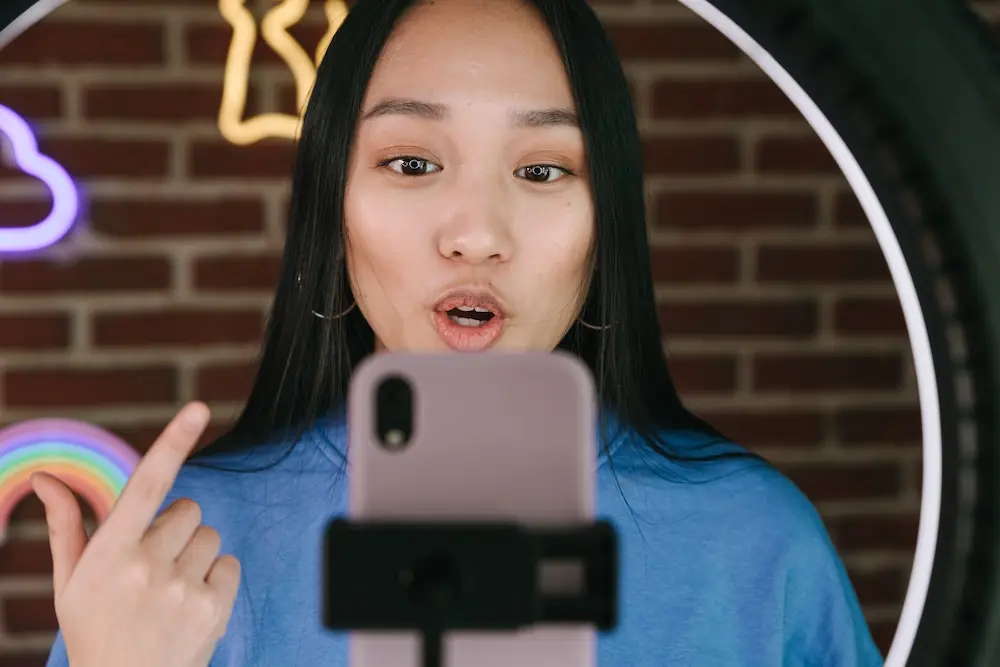There is a great deal of hype surrounding influencer marketing for eCommerce. But does it really work for online businesses?
Influencer marketing works because social proof is extremely important to consumers. In fact, influencer marketing is considered one of the most profitable types of advertising campaigns. According to the Influencer Marketing Benchmark Report 2019, for every $1 spent on influencer marketing campaigns, there is an average return rate of $18.
The growth rate of influencer marketing is rapid, with the market growing from a worth of $1.7 billion in 2016 to $13.8 billion in 2021. It is now projected that it will reach $16.4 billion by the end of 2022. In short, the high ROI (return on investment), impressive engagement rates, and strategic targeting that influencer marketing offers through using the credibility of social authorities make influencer marketing a no-brainer.

The best part? You don’t have to be a huge brand with a sizable revenue to enjoy the benefits of influencer marketing! Even young, smaller eCommerce businesses can make it work for them.
Read on to learn more about how influencer marketing works, how much it costs, and how to leverage your own influencer marketing strategy.
In this article:
- What is Influencer Marketing for ECommerce?
- Why is Influencer Marketing Important for ECommerce businesses?
- How Much Does Influencer Marketing Cost?
- Types of Influencer Marketing Partnerships
- Create an Influencer Marketing Strategy
What is Influencer Marketing for ECommerce?
Influencer marketing is when brands collaborate with online ‘influencers’, or people with a large social media following, to market their products.
Influencers have a personable creator style, in which their content is a peek into their everyday lifestyle. Therefore, their engagement rate (ER) is often much higher than that of an eCommerce brand. In short, people like feeling that they are engaging with a real person.
This type of marketing can take place on a variety of social media platforms, from Facebook and Instagram to YouTube, Twitter, TikTok, and more. Although these platforms are relatively new in the history of marketing, the concept has actually been around for some time.
Subscribe to the eCommerce newsletter for
top industry insights
Another way to think of influencer marketing is that it is the modern version of old-school celebrity endorsements. There are many different types of influencers, ranging from those with upwards of a million followers to those with just a few thousand. Below we share more on the types of influencers out there and their value for eCommerce brands.
Why is Influencer Marketing Important for ECommerce Businesses?
There are many benefits of eCommerce influencer marketing. This makes it a desirable choice, even for small and mid-sized businesses. Here are the key advantages of influencer marketing:
Increase brand awareness
Social media influencers have accumulated a large following. With influencer marketing, you’re able to tap straight into their audience without having to amass a large audience on your own. This is especially helpful for new eCommerce businesses.
You’ll get to enjoy the influencer’s social authority without the extra effort needed to create your own. They’ll be able to increase awareness for your brand by sharing it with their large community. Of course, building your own brand authority is important as well, but it can take time. If you’re not there yet, an influencer can help you get started.
Develop rapport with your growing audience
If someone stumbles across your brand but hasn’t heard of it before, they’re less likely to trust your product or service simply because it’s unknown. The endorsement of an influencer, someone that consumers trust, boosts confidence in your business.
In fact, 61% of consumers report that they tend to trust social media recommendations from influencers or people they know, while only 38% are likely to trust a brand’s own recommendations.

The weight of the influencer’s voice on their own audience is substantial; they have a strong influence. People are more likely to see your product in a positive light if their favorite influencer uses it and recommends it.
Reach niche audiences
When you choose the right influencer for your marketing, you’re able to access the right people for your product. Influencers who are focused on a specific niche will attract people who are very specifically interested in that. If you sell workout apparel made from recycled materials, for example, utilizing an eco-conscious fitness influencer can help you reach your ideal target audience.
Every product or service has a specialized market segment that they are targeting. If your product is very specific, it may even be worth tapping into the audience of an influencer with a relatively small following since a large percentage of those reached will fit your ideal customer profile.
Extra SEO benefits
It may come as a surprise, but influencer marketing is actually beneficial for SEO. Since the influencer not only shares your product but also links back to your eCommerce store, it generates backlinks. These greatly increase your SEO strength. When the influencer already has a high-authority site in the eyes of Google, those backlinks are particularly valuable when it comes to boosting rankings.
Traceable engagement
The fact that you can track performance in your campaigns through influencer marketing is another great benefit. Social media platforms provide in-depth analytics for users, so you can review reach, engagement, and demographic metrics not just for the platform as a whole, but also for individual posts.
This enables you to track the success of the posts that you’re sponsoring. When you review the views, clicks, likes, shares, and other metrics, you can determine the success of the campaign and make adjustments to the content. You’ll also have a clearer view of how well a particular influencer markets your brand to deliver conversions.
How Much Does Influencer Marketing Cost?
There is no simple answer to the question of how much influencer marketing costs. As with any product or service, the rate that you pay ultimately depends on a range of factors, including:
- The influencer’s following and engagement
- The platform they use
- The content strategy (i.e. number of posts, whether it is video, photo, or text marketing)
- The time and effort required by the influencer
- The promotion location (and if there is cross-promotion)
- Agency fees (if the influencer is with a professional marketing agency)
How influencer marketing pricing works
Rather than paying per shoutout or post, influencer marketing often includes package pricing structures, where there will be a set number of varied posts and content over the course of a week, month, or longer.
These packages may make it more affordable in the long run. If you go down the route of purchasing a package, however, you will likely end up paying a larger deposit up front, so some marketing capital is needed for this route.
Before getting started with an influencer, it’s a good idea to first consider the type of influencer, your budget, and your content needs. Start reaching out to different influencers in your niche to get price quotes, strategy ideas, and a clearer idea of the engagement you can expect.
Influencer categories
Influencers vary in terms of their number of followers and their reach potential. In almost all cases, the higher the follower count, the higher the rates will be. It’s helpful to consider it in terms of reach categories:
- Nano-influencers: 1,000–10,000 followers
- Micro-influencers: 10,000–50,000 followers
- Mid-tier influencers: 50,000–500,000 followers
- Macro-influencers: 500,000–1,000,000 followers
- Mega-influencers: 1,000,000 followers and up
Remember, just because an influencer has a high following, it doesn’t mean the audience is engaging. It’s important to check how engaged an influencer’s followers are, in addition to the number of followers. The more likes, comments, and shares a campaign racks up, the better the campaign will do.
Popular content
- 14 strategies to improve your eCommerce business’s financial health
- 50+ ChatGPT prompts to elevate your eCommerce business
- A guide to pricing your product on Amazon
- 5 marketing metrics all eCommerce businesses should track
- All about Amazon PPC
Try to steer clear of influencers with large, non-organic or purchased followers. Their audience is usually not real or simply not interested in the content.
An influencer’s niche impacts rates as well. Industries with lots of competition, like beauty, usually have lower rates. If you’re in a very niche market, however, there may be fewer relevant influencers, leading to higher prices.
Types of Influencer Marketing Partnerships
So, you’ve decided to work with an influencer. What will they actually do for you? These are the most common types of influencer marketing partnerships.

Giveaways: Short-term, time-sensitive promotion in which a brand provides an influencer with products to run a giveaway or contest through their platform. Generates leads and increases awareness.
Shoutouts: Paying a user to promote the product with or without visuals. Includes a CTA (call-to-action) with links to buy or to direct followers to the brand.
Platform Takeover: Generally used on Instagram, Snapchat, and TikTok. The influencer is given access to the brand’s platform for a limited amount of time and curates content for the brand.
Affiliate marketing: Commission-based promotion of products. An influencer markets a product to their followers and is paid per sale.
Sponsored content: Content in which an influencer uses or discusses the product. The brand creates content for the influencer or the influencer creates content on their own.
Product gifting (seeding): Gifting an influencer a product for the influencer to share with their audience. This is generally more suitable for smaller influencers.
Brand ambassador: Longer arrangement for regular partnership promotions. The influencer becomes an ambassador for the brand.
Create An Influencer Marketing Strategy
Once you’re ready to dive into influencer marketing, you need a strategy. The following steps outline the key actions to take when setting up and launching your campaign with an influencer.
1. Create campaign goals
As with any type of marketing campaign, it’s important to have a good idea of your goals before getting started. This will help you choose an influencer, create direction for your campaigns, and provide the influencer with clarity on what you need.
If you are trying to grow your brand awareness, your goal will be to get as many impressions as possible. Growing your audience, on the other hand, means building up your list of subscribers and followers.
Identifying leads may entail getting potential customers to sign up for a newsletter, updates, or a free eBook. Or, nurture your audience and create future leads with a strategy that prioritizes engagement.
Increasing sales is your ultimate goal, of course, but the other objectives can help you get there.
2. Set your target audience
It’s important that you are clear on your target audience. This will help you choose the right influencer to reach people who are most likely to be interested in your brand. That’s why it’s important to define your ideal customer.
Think about things like your ideal customer’s age, gender, interests, location, what other brands they like, their online communities, pain points, and more.

Once you have a clear understanding of your ideal customer, you can choose an influencer that has a following with similar demographics. This can also help you decide which marketing channel to use. If you’re targeting a Gen Z audience, TikTok is a great option. For millennials, Facebook and Instagram might be the way to go. Deciding on one social media platform or a multichannel approach depends on your budget, your list of relevant influencers, and the target audience you have defined.
3. Influencer outreach
Now is the time to reach out to the influencers you have in mind with a proposal and request for rates. It’s ideal to reach out via email, rather than social media, as they’re more likely to see and respond to your inquiry.
Introduce yourself, your business, why you wish to work with them, and describe in detail what you require from the influencer. You can ask about their rates, packages, and anything else that you need to know about how they work.
Since influencers generally get a lot of communication, it’s best to follow up after a few days if there has not been a reply. You can also follow up on their social account pointing them to the email you have sent.
4. Finalize your agreement
When you come to an agreement, it’s vital that you finalize it with a contract. This protects both you and the influencer from future disagreements and misunderstandings. Naturally, your contract will differ depending on your agreement. Your influencer might even have a contract ready to go ahead of time. Make sure to include the following points in your contract:
Creative freedom: What allowances do influencers have in the content creation? Are there any boundaries you have as a brand that your influencer needs to know? It’s recommended to give influencers some creative freedom so that the content really resonates with their audience.
Ownership: If you intend on resharing your influencer’s content, be sure that this is outlined in the contract. State how it can be reshared and on which platforms. It’s also recommended to agree on the duration of the ownership of the content.
Deliverables: A key part of the contract is what will be created and shared over what time frame. Additionally, outlining clear guidelines regarding the format, visual/audio elements, and more, will ensure that what is delivered is what you have envisioned.
Deadlines: The campaign will also need clear deadlines. This includes the duration of the campaign, the approval deadlines if influencers submit the content before posting, and the dates and times that the content should be shared.
Exclusivity: This helps you ensure that your influencer is not engaging with your competition for a set period of time. You don’t want to be in a position where they market your competitors’ product a few days after your campaign ends.
FTC Disclosure: How will your influencer comply with FTC (fair trade commission) guidelines? One common way is the influencer using the #ad hashtag. Create an agreement on how they will comply.
5. Launch your campaign!
Once you and your influencer come to an agreement and sign a contract, it’s time to launch your campaign.
You’re not done with your work yet, though. After your campaign is live, you should track its progress and success. Measuring the results of the campaign is crucial to ensure that your marketing budget is being utilized effectively.
How can you keep track of your campaign results?
- Use separate links and keywords for every influencer.
- After three days, measure the value of the paid post.
- Have the influencer send analytics data from the platform.
- Ensure all data is compiled into one place.
Get clear on how you will measure your ROI. The following metrics are good places to start:
- Sales numbers generated through each link
- Website visitor counts
- New subscribers and followers
- Newsletter signups or freebie downloads
- Engagements with campaign hashtags
- Engagement on sponsored content including likes, comments, and shares
- This gives you a clear picture of how your campaign is faring, allowing you to make decisions on the content or your choice of influencer.
Influencer Marketing for ECommerce
Having someone with a large, loyal audience promote your products in a more casual way than regular advertising makes sense. Online advertisements are everywhere, and people are hesitant to trust a brand’s promises without something to back it up. The way around this is influencer marketing.
Marketing your product in a more natural way, in which a real person sings its praises, is a fantastic strategy to leverage their social authority and get your eCommerce products out there for the world to see (and buy!).
However, as with most types of marketing campaigns, influencer marketing takes money. For an eCommerce brand just starting out, it can be a challenge to scrape together the working capital to start a new influencer marketing campaign.
That’s where 8fig comes in. 8fig is an eCommerce growth platform that provides brands with the tools and funding they need to grow their business. If this sounds like something that can help your brand, sign up for an 8fig Growth Plan today!
Subscribe to the eCommerce newsletter for
top industry insights
to our blog
Read the latest
from 8fig

AI is quietly reshaping eCommerce. Karma’s Hadas Bar-Ad explores how today’s sellers are using intelligent tools to streamline operations, boost efficiency, and drive smarter growth.

WhatsApp isn’t just for memes and group chats anymore. With a 98% open rate, it’s the secret weapon your eCommerce marketing strategy might be missing. Here’s how to do it right.

Stuck with extra inventory after Amazon’s Spring Sale? Learn five smart strategies to clear unsold stock, boost cash flow, and avoid future overstocks with smarter inventory planning.
